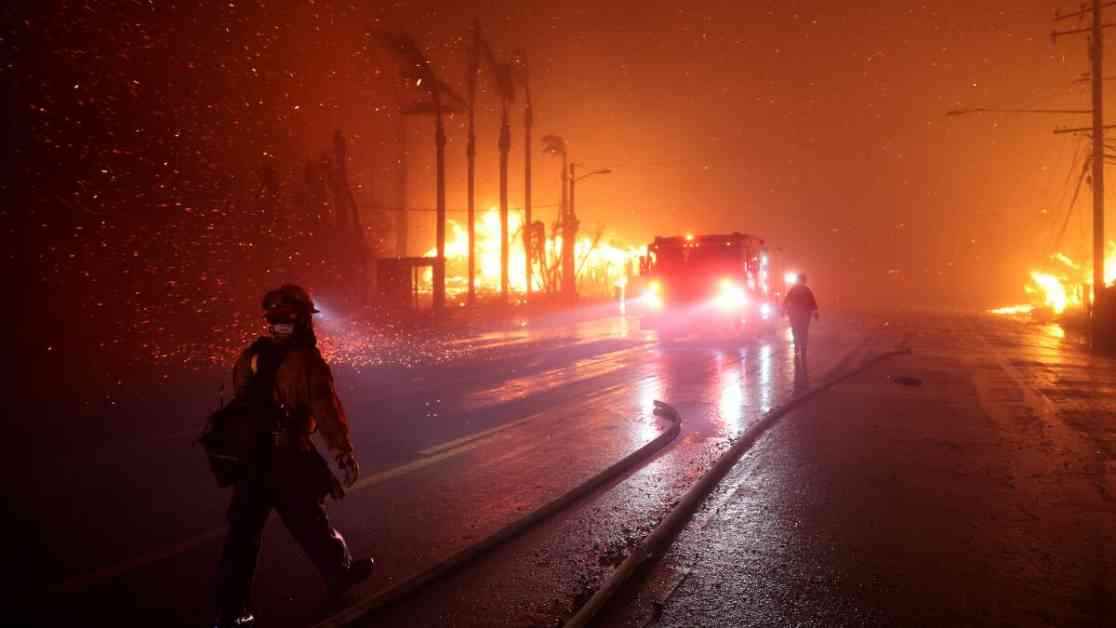Former Chiefs Recommend More LAFD Engines in Palisades Hills
The morning of January 7th started with a 911 call at 10:29 a.m. from a concerned resident on Piedra Morada Drive in Pacific Palisades. The caller reported a fire visible in the distance, flames dancing over a chaparral-choked ridge. As the Los Angeles Fire Department’s Engine 23 made its way to the scene, high winds added fuel to the fire’s ferocity. It would be over 18 minutes before Engine 23 or any other firefighting crew reached the area, according to an LAFD incident log obtained by The Times.
Critical Travel Times and Pre-Deployment Decisions
Travel times were crucial that morning as LAFD officials had made the decision not to pre-deploy any engines and firefighters to the Palisades, despite warnings of dangerous winds. The National Weather Service had identified the Palisades, San Fernando Valley, and Hollywood as high-risk areas for the anticipated windstorm and fire hazard. Former top officials from the LAFD suggested that at least 10 additional engines could have been sent to the Palisades before the fire, potentially leading to early detection and control of the blaze.
The Lack of Strategic Pre-Deployments and Response Failures
The crews closest to the fire were stationed at Stations 23 and 69, both located on Sunset Boulevard several miles away from the Piedra Morada address. Without engines patrolling the hillsides and canyons, firefighters were left at a disadvantage in confronting the rapidly spreading flames. Former LAFD chiefs noted that fires in high winds are particularly challenging but strategic pre-deployments could have helped contain the blaze. Unfortunately, without reinforcements strategically placed to “keep it skinny” and protect homes in the fire’s path, Engine 23 and crews from Station 69 were left to combat the inferno on their own.
Expert Insights and Recommendations
Former LAFD Asst. Chief Patrick Butler, now the chief of the Redondo Beach Fire Department, highlighted the risk of rekindling from smoldering embers, a common phenomenon after fires in chaparral areas. The investigation into the Palisades fire is exploring the possibility of wind-propelled rekindling as a cause. Firefighters faced challenges without the necessary resources to employ their standard tactics, as former LAFD Battalion Chief Rick Crawford and retired Los Angeles County Fire Department Captain Perry Vermillion emphasized. Strategic engine placements and early patrolling could have made a significant difference in the outcome of the blaze.
The Aftermath and Accountability
LAFD Chief Kristin Crowley and Mayor Karen Bass have faced scrutiny for the department’s response to the Palisades fire. Questions remain unanswered about the precise whereabouts of engines before the blaze and the decision-making process that led to the lack of strategic pre-deployments. The failure to order additional engines and firefighters to remain on duty on January 7th has raised concerns about the department’s preparedness for such emergencies.
Moving Forward Towards Enhanced Fire Safety
With lessons learned from the Palisades fire, the importance of pre-deploying engines, strategic patrolling, and early detection in high-risk fire areas has been underscored. The need for collaboration between fire departments, officials, and residents in implementing effective fire safety measures is crucial to preventing future disasters. By taking proactive steps and investing in resources to combat wildfires, communities can better protect lives and property from the devastating impact of uncontrolled blazes.


